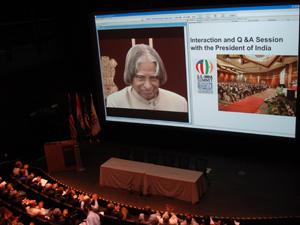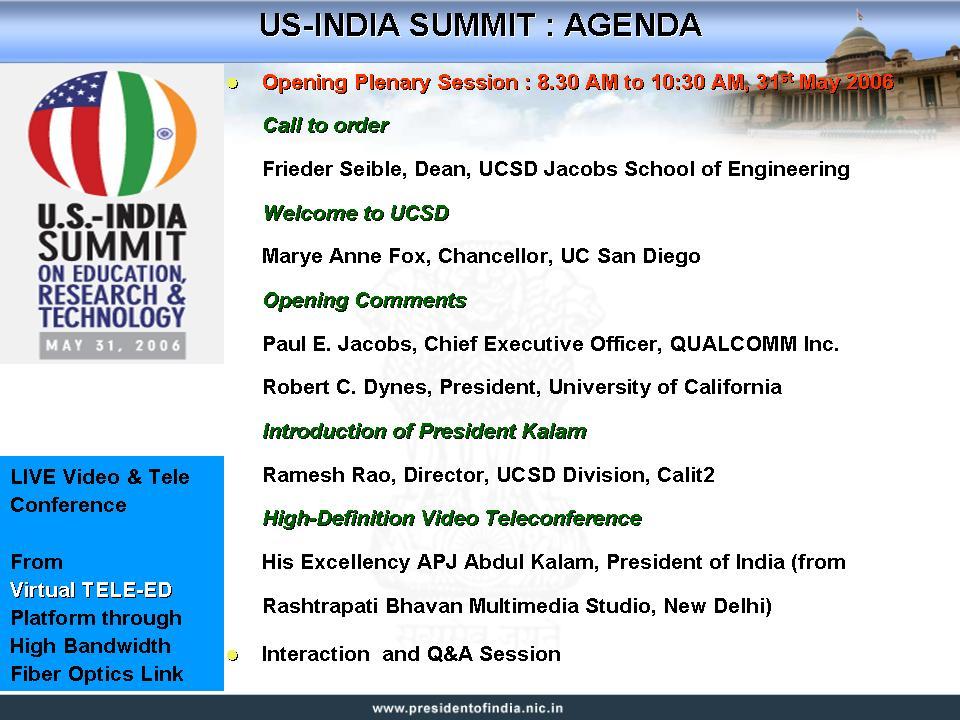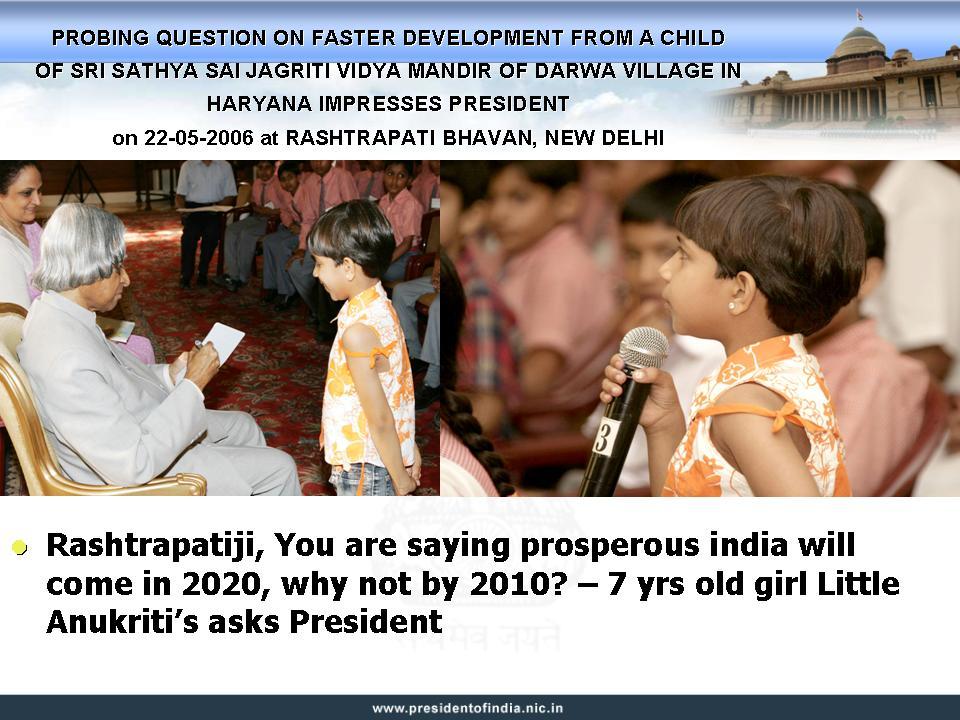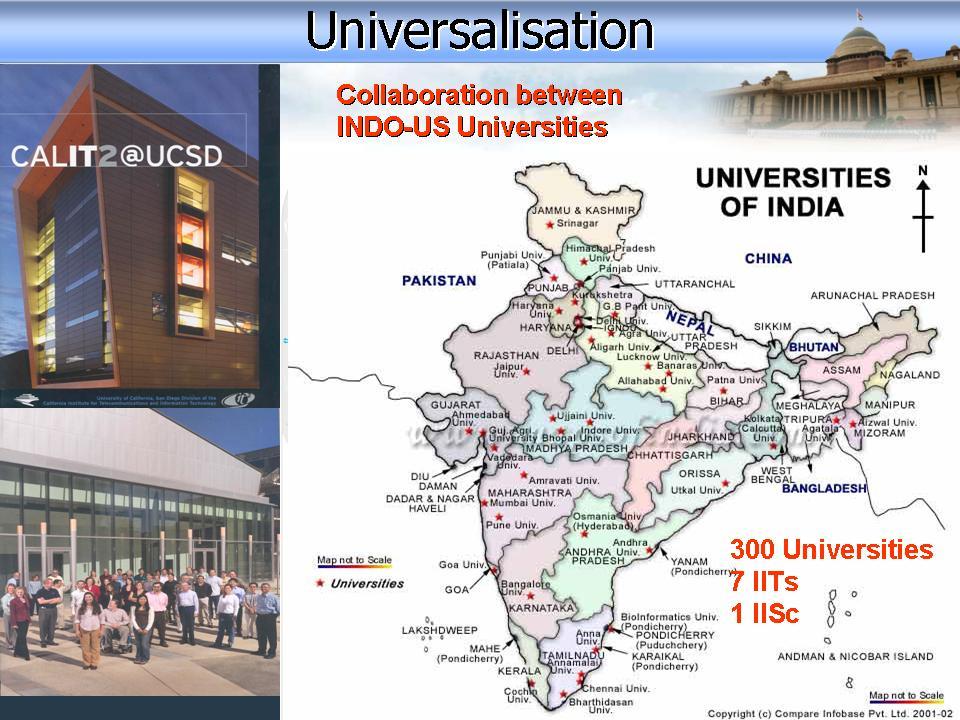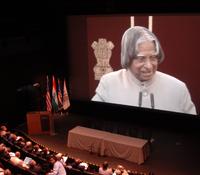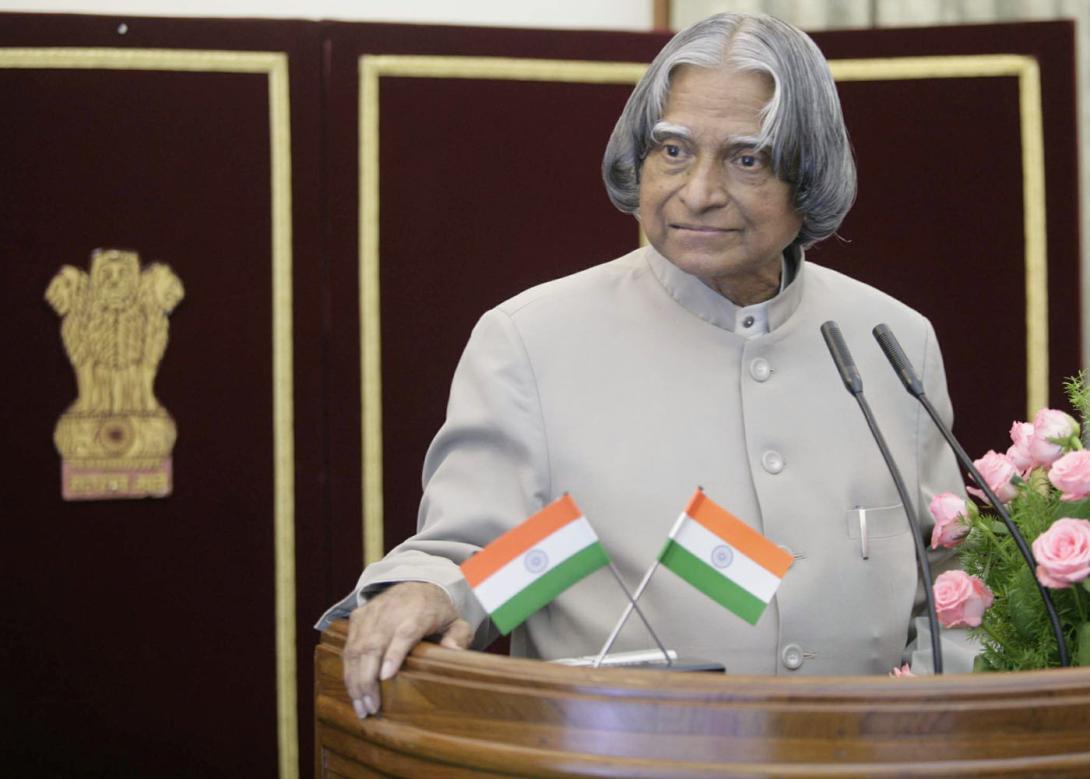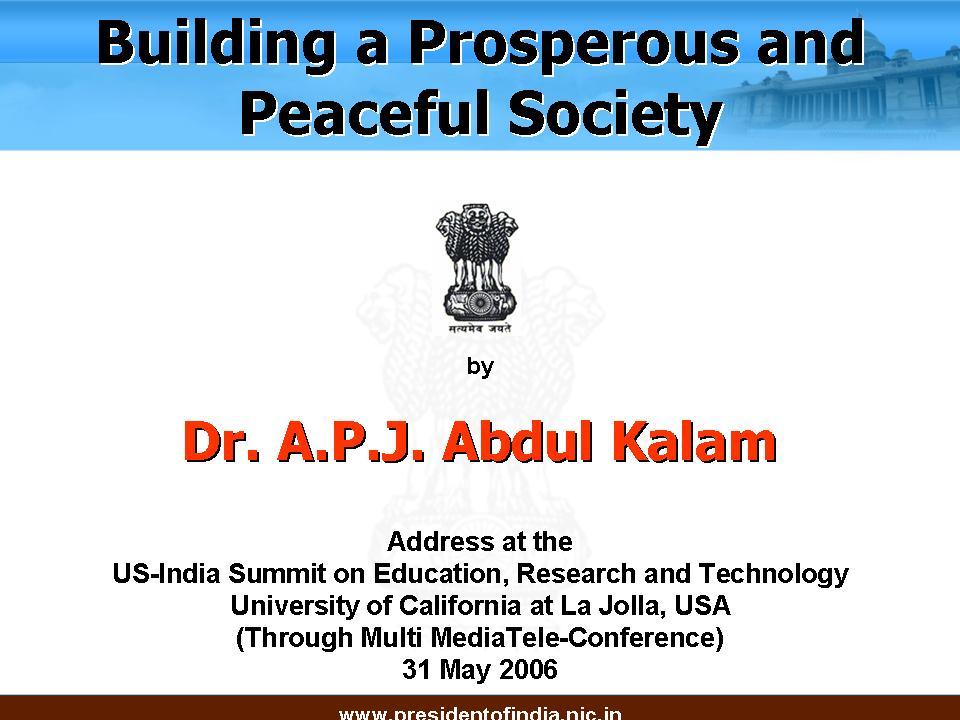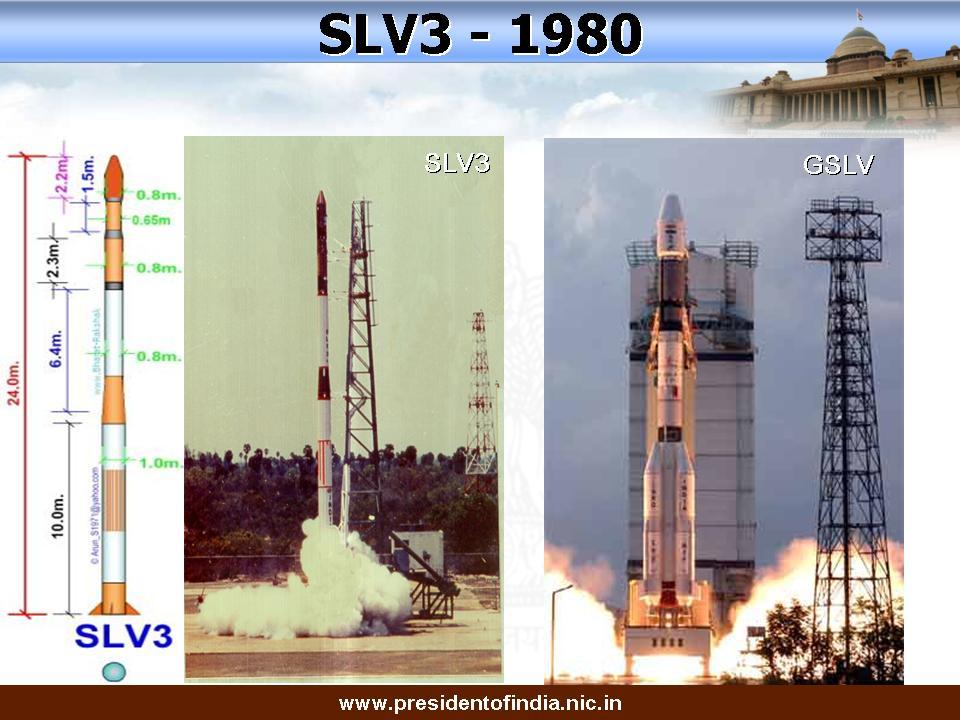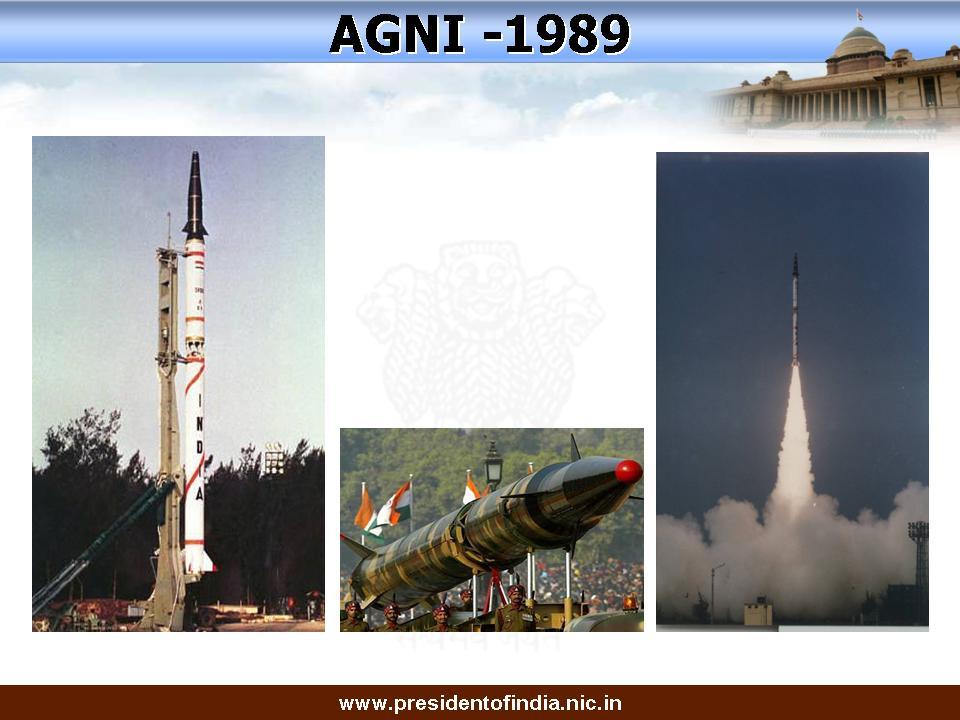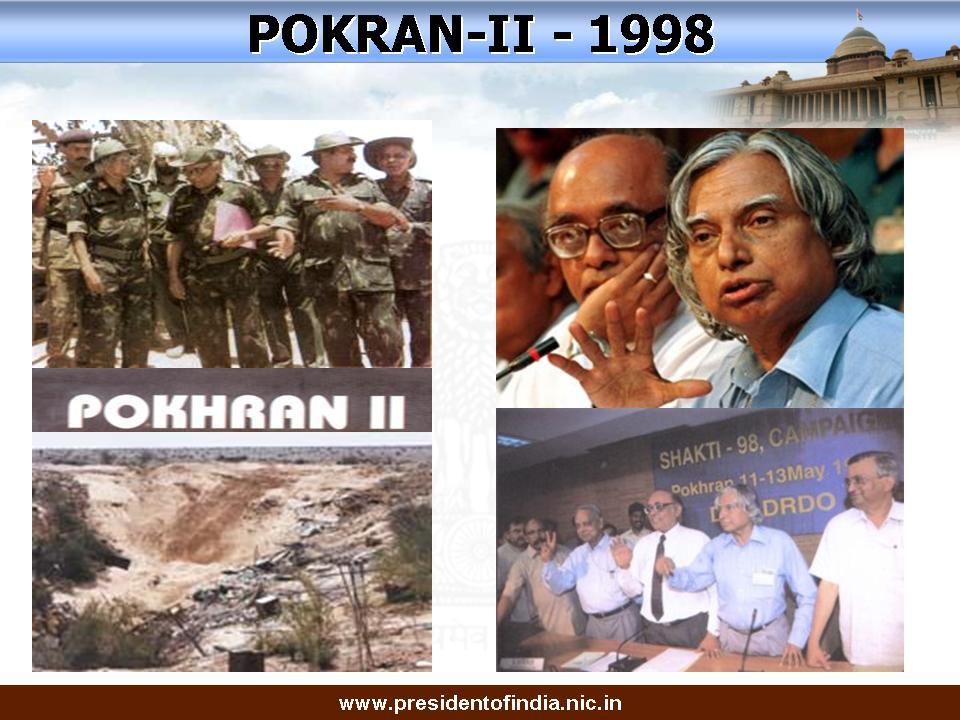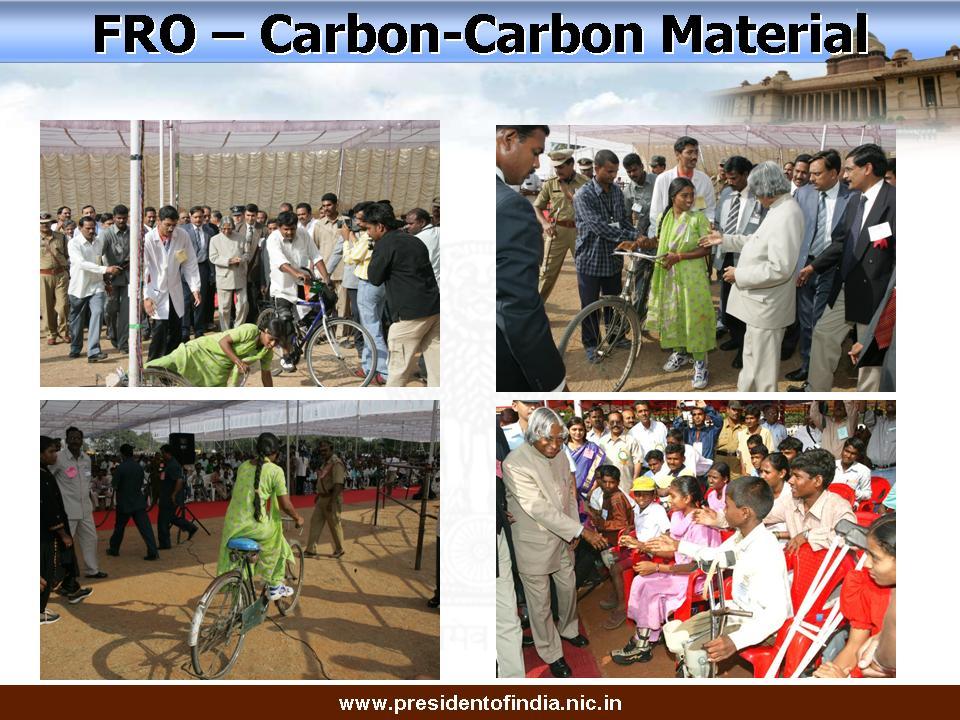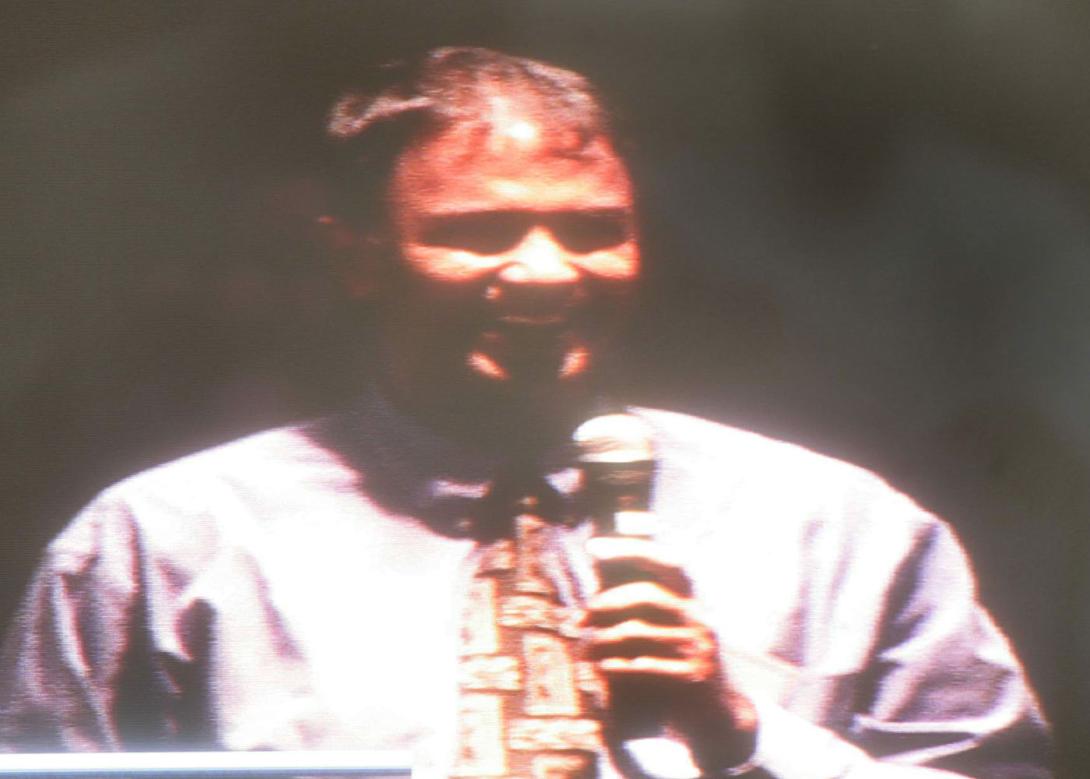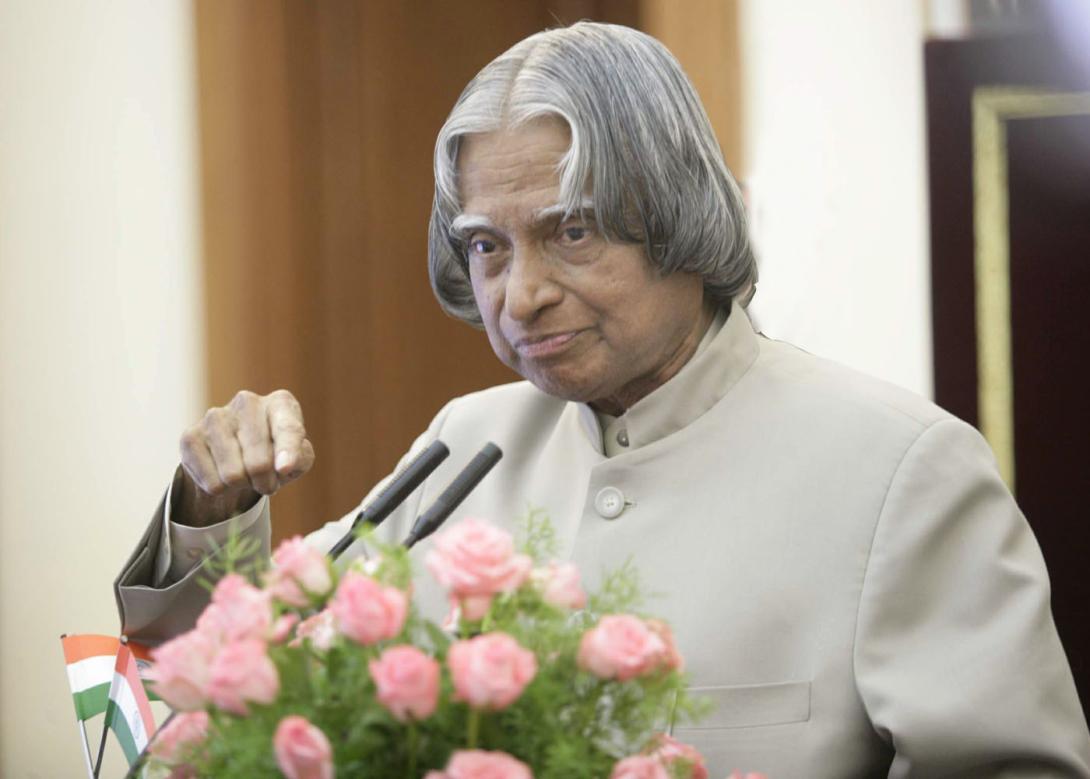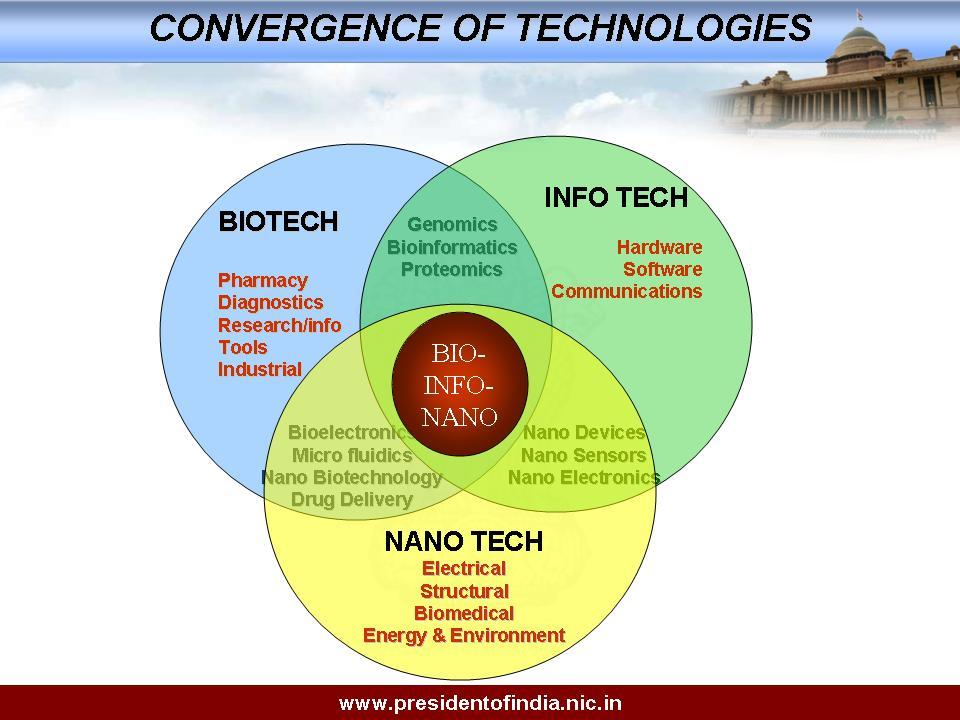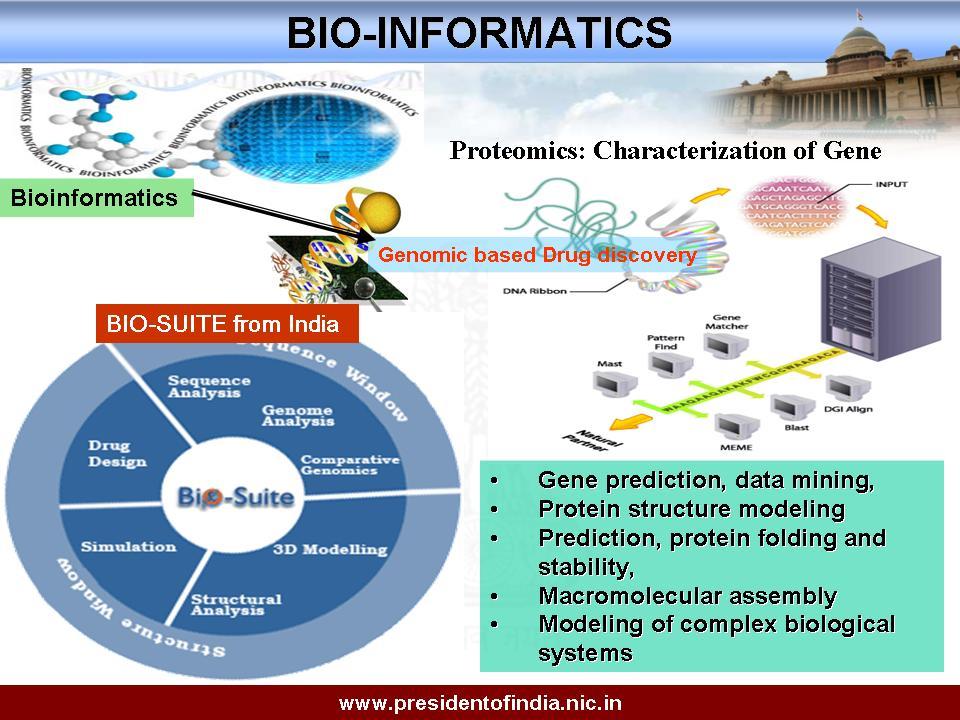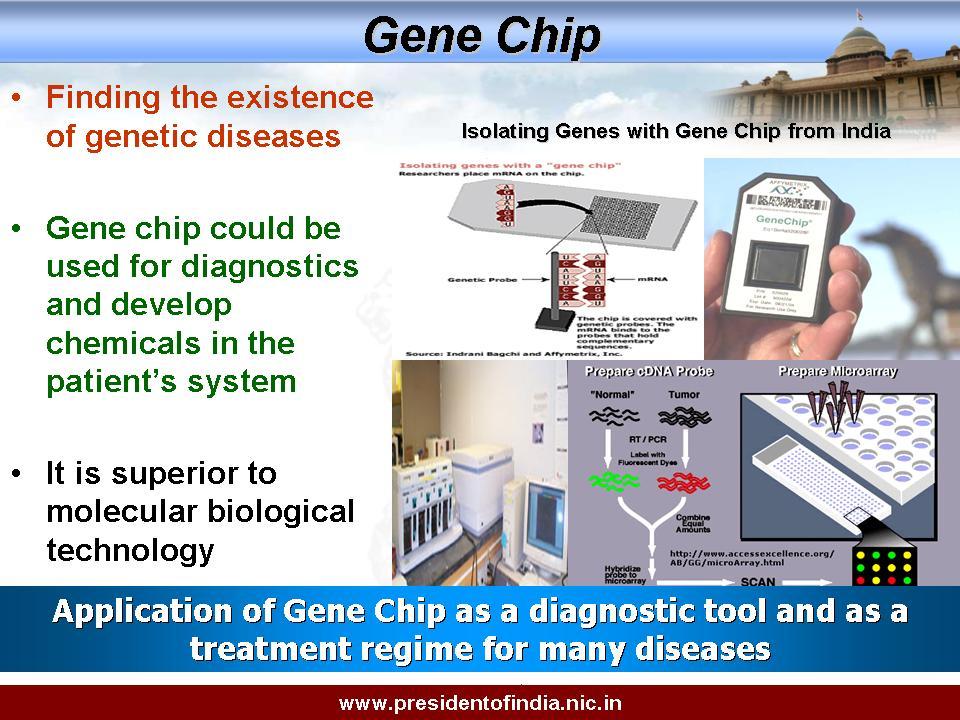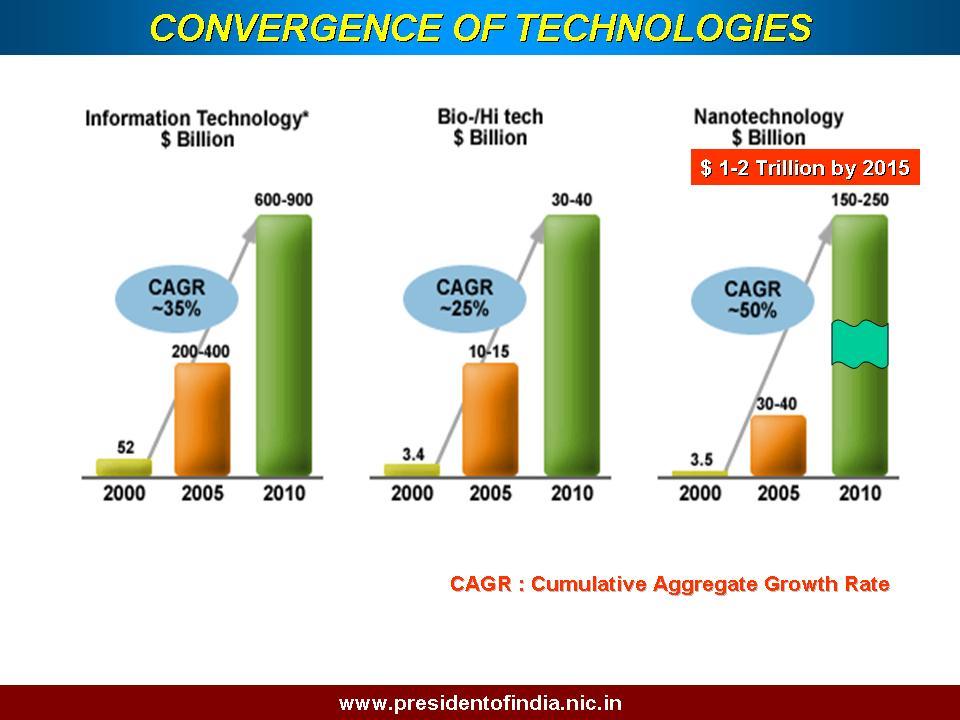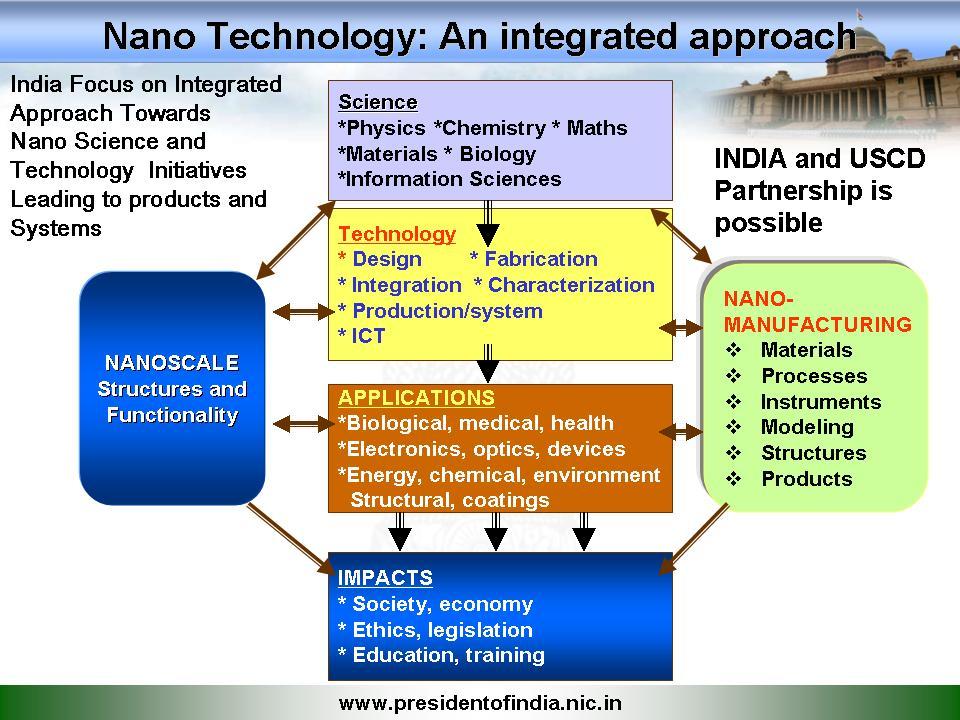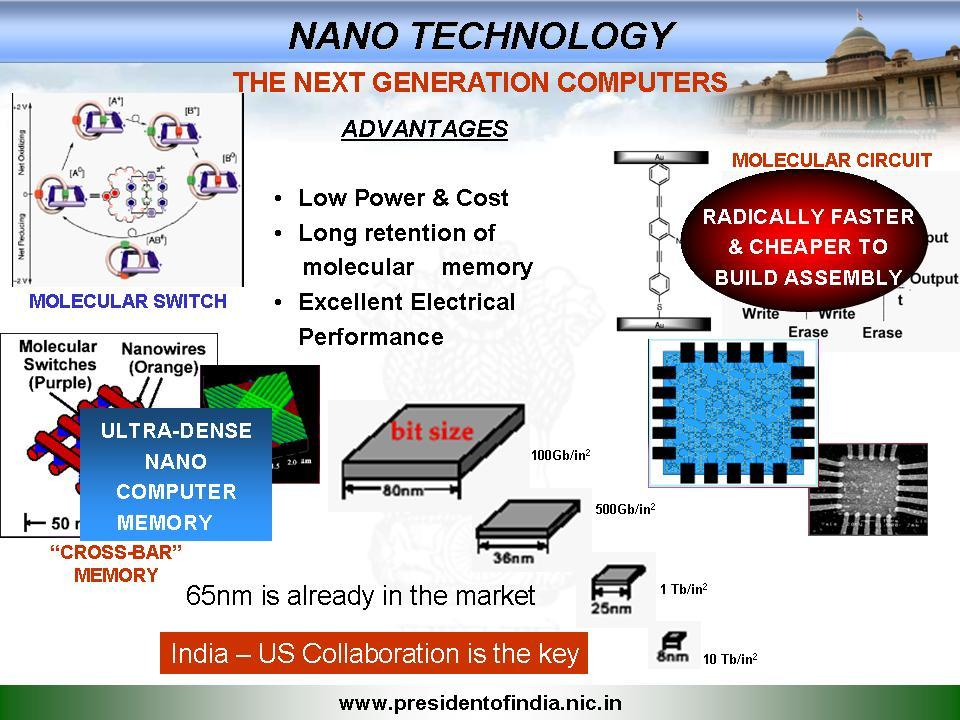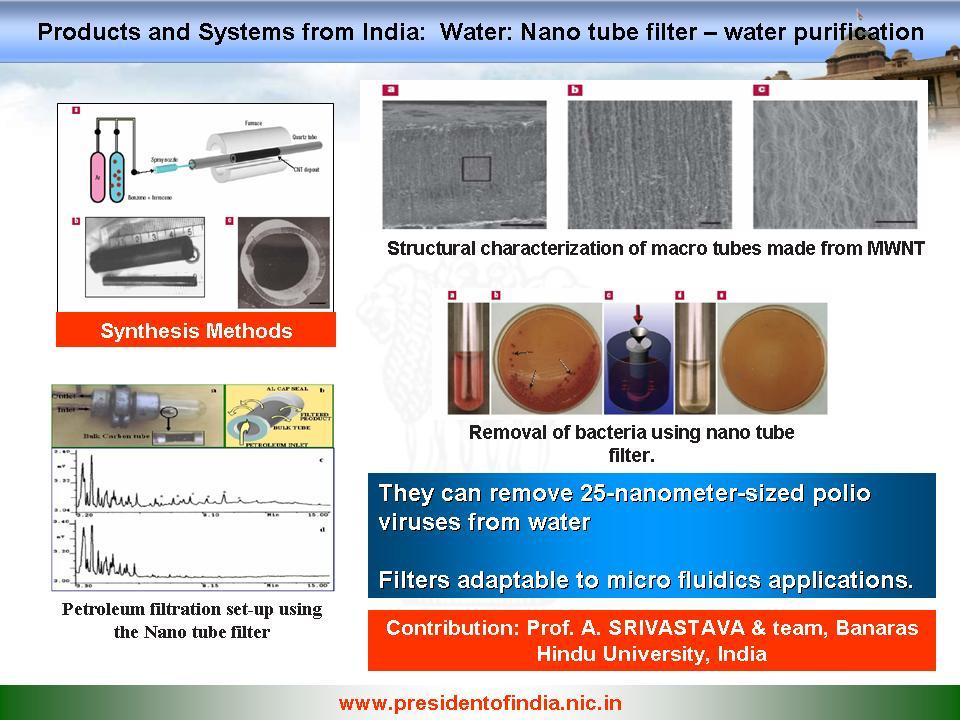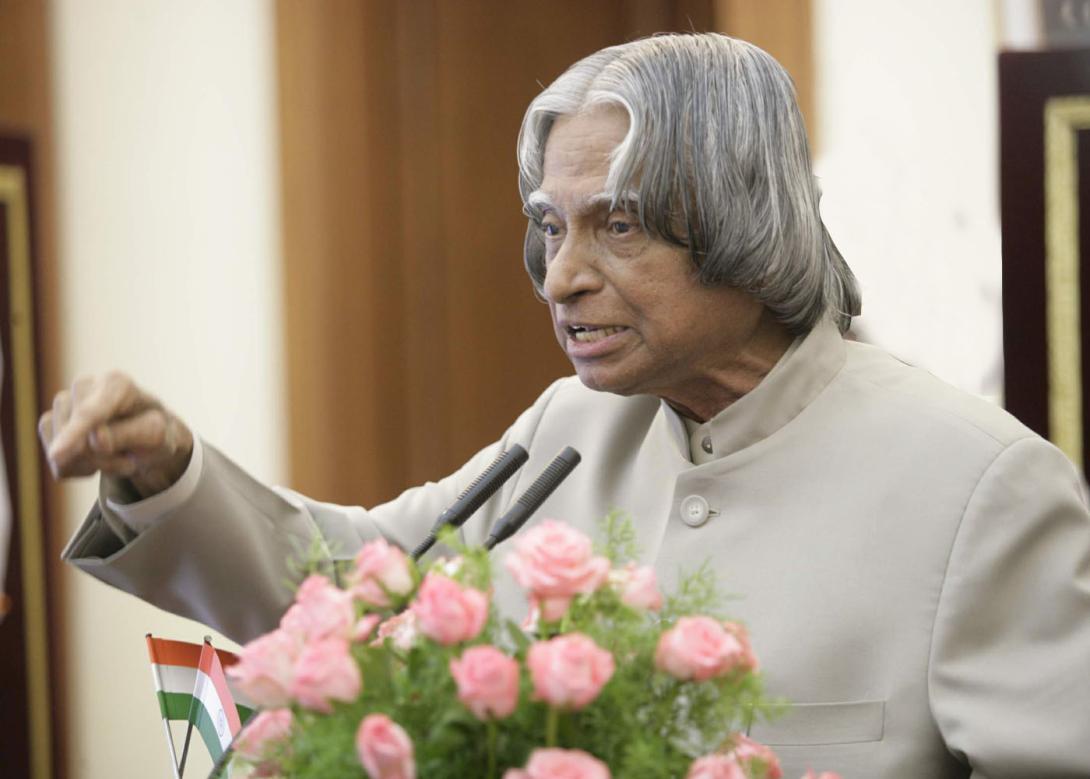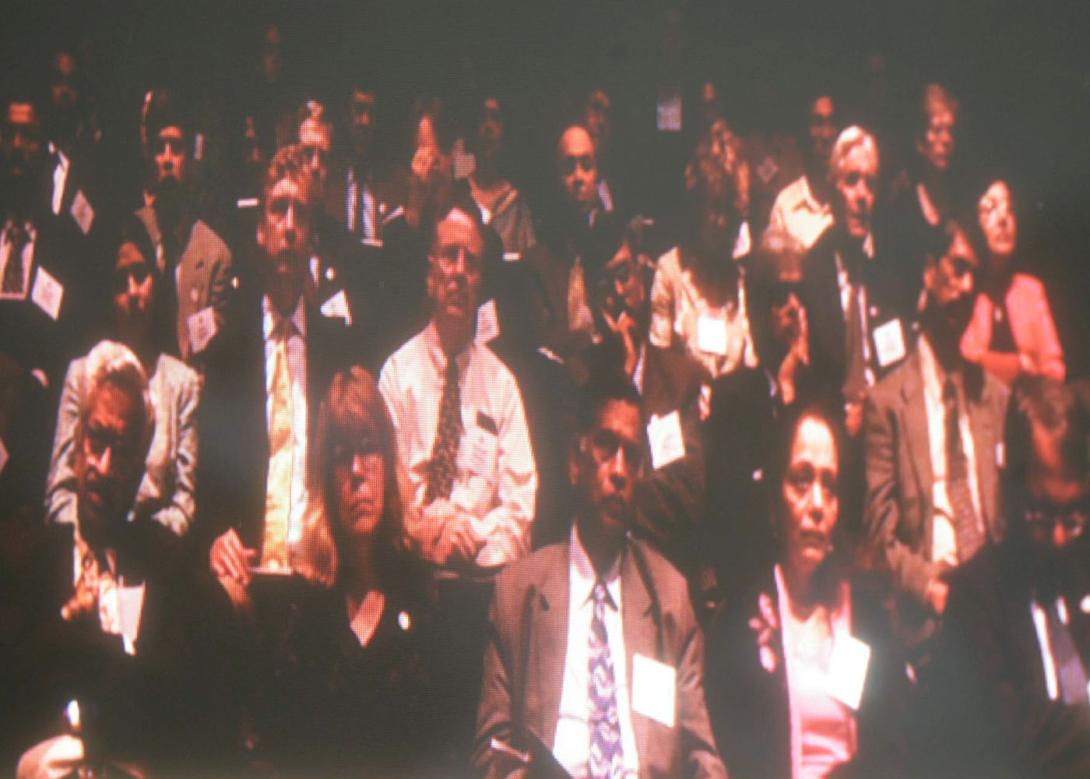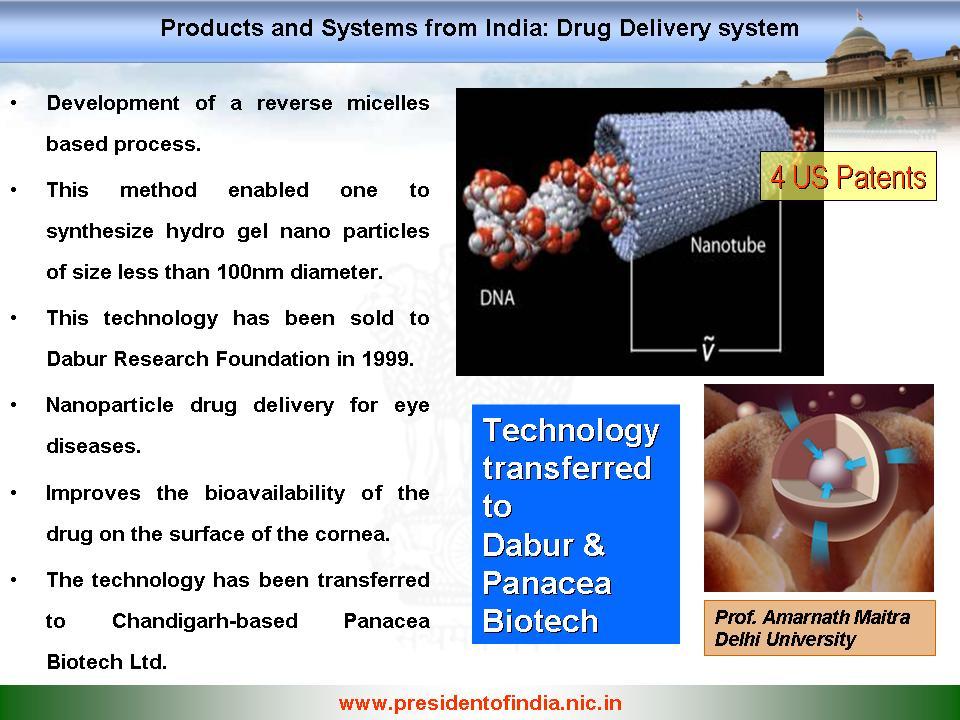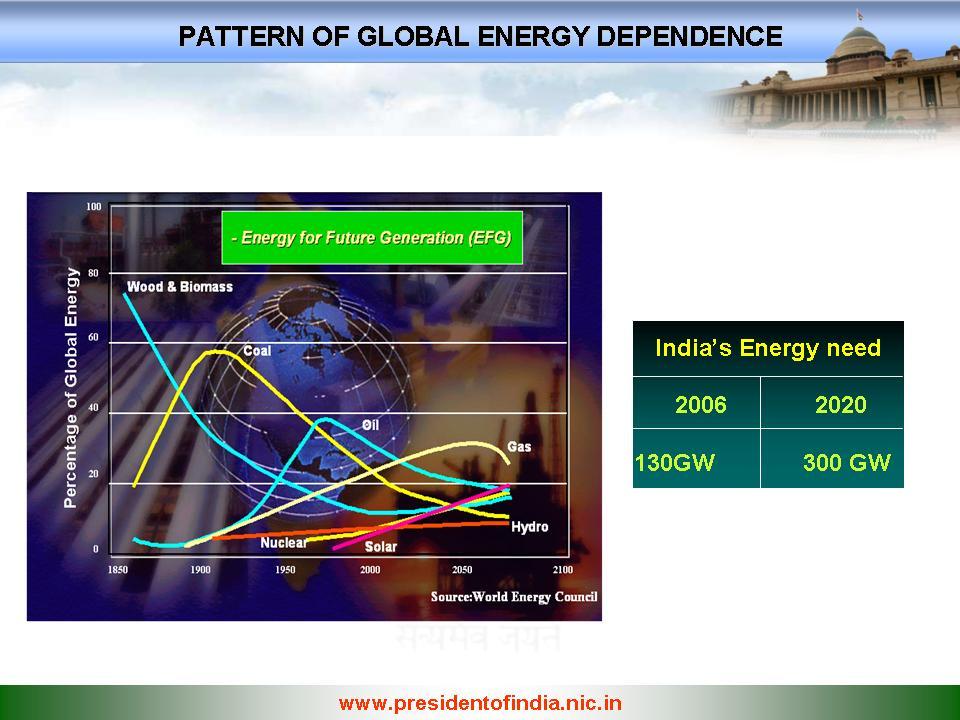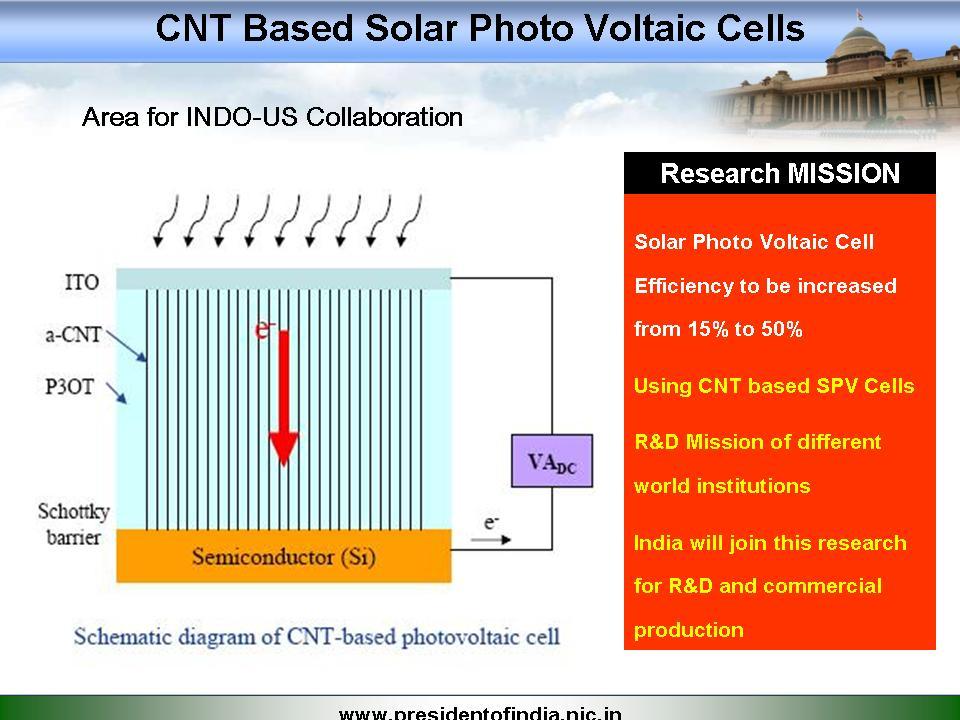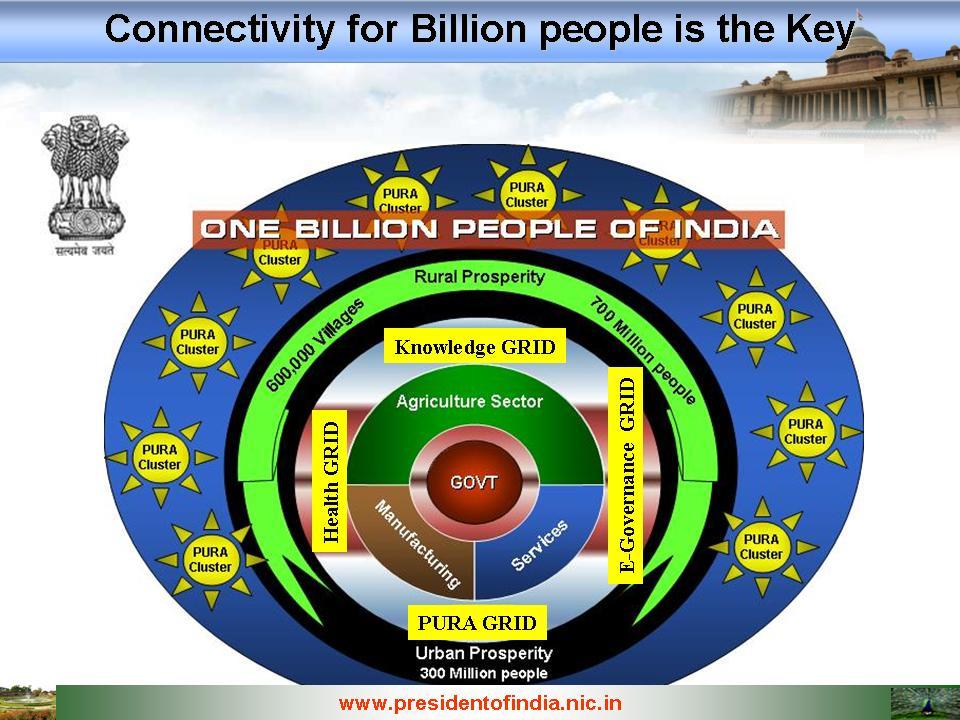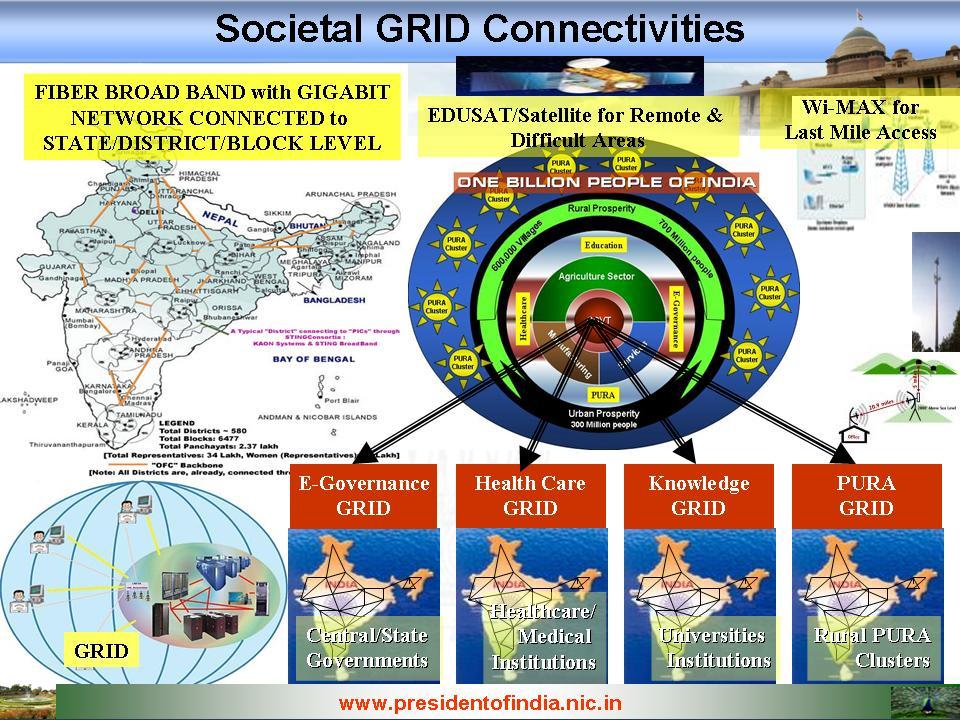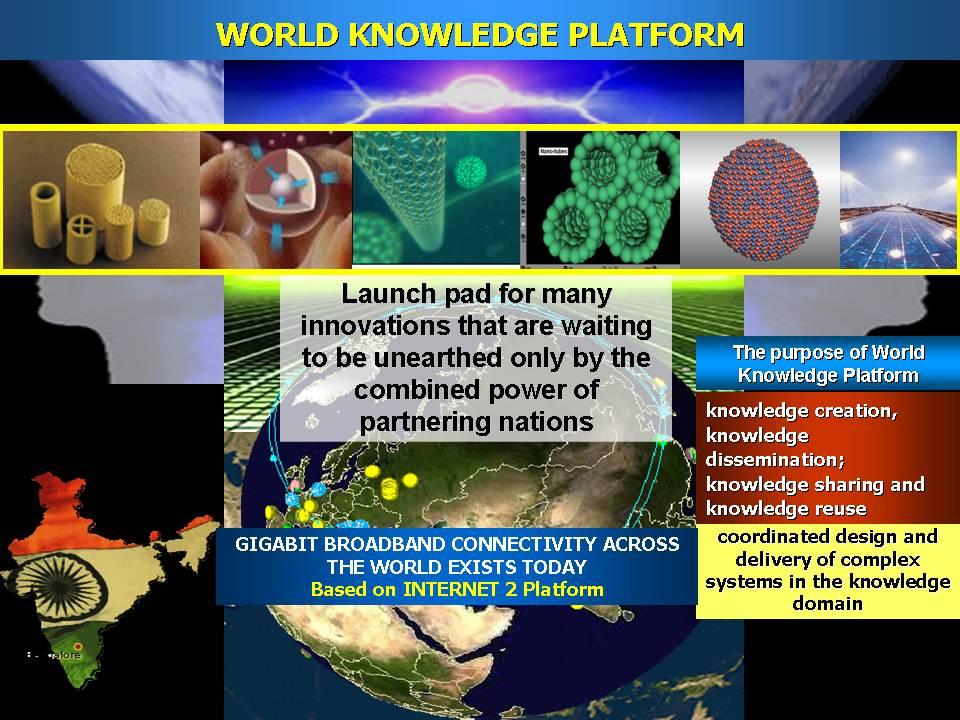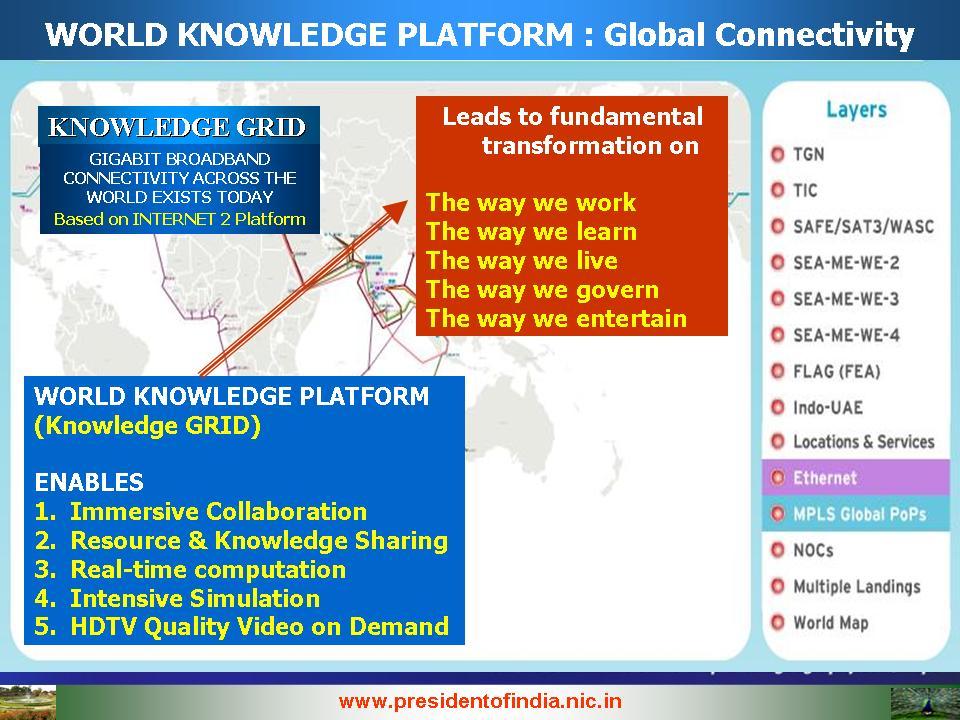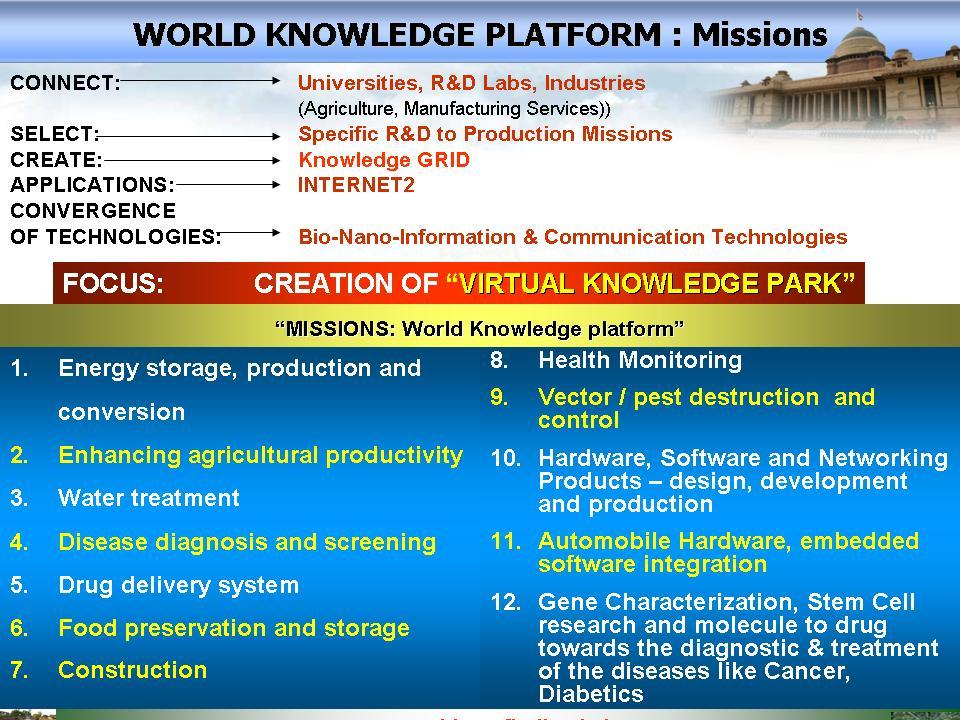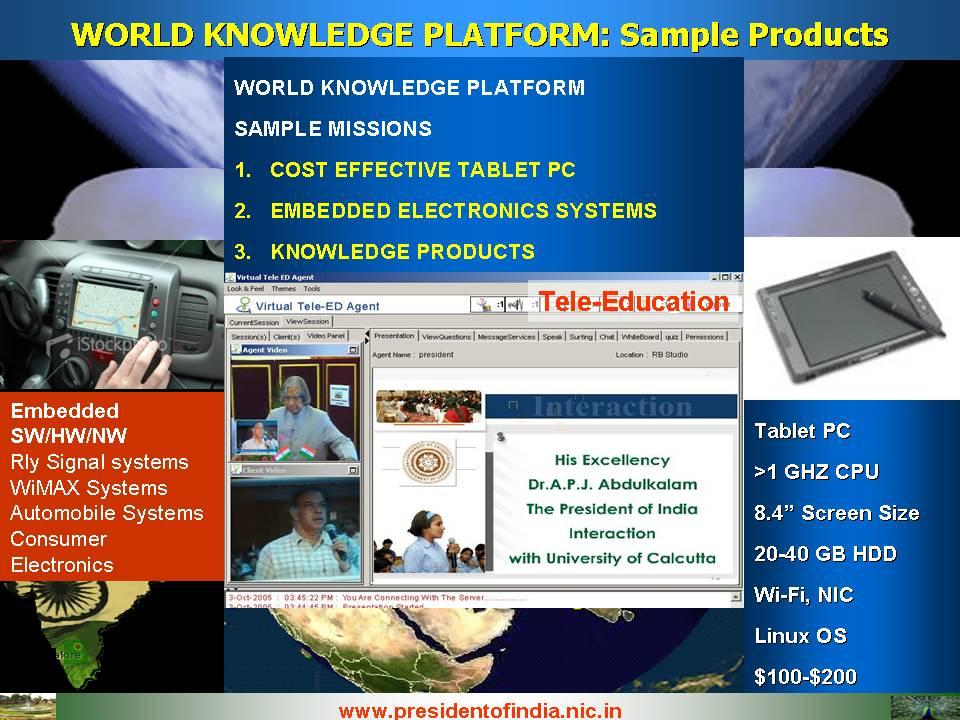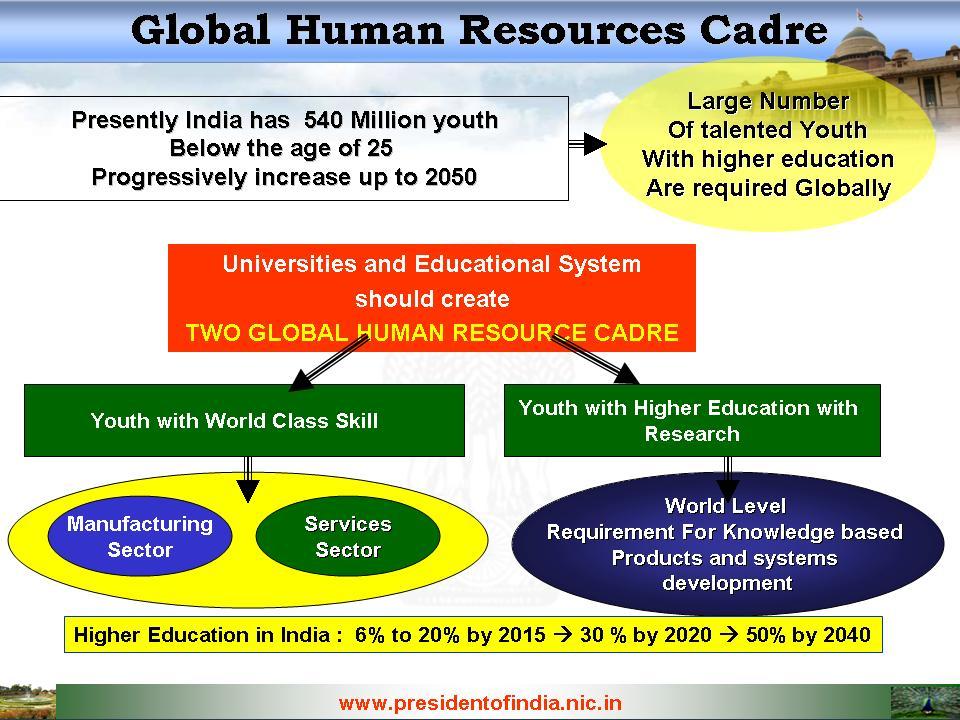Address at the US-India Summit on Education, Research and Technology, University of California at La Jolla, USA (Through Multi Media Tele-conference)
New Delhi : 31-05-2006
Building prosperous and peaceful society
I am indeed delighted to participate in the US-India Summit on Education, Research and Technology organized by University of California and California Institute of Telecommunication and Information Technology. My greetings to Robert C. Dynes, President, University of California, Marye Anne Fox, Chancellor of University of California, Paul E. Jacobs, Chief Executive Officer, QUALCOMM Inc. Ramesh Rao, Director Calit2, researchers from Government and industry laboratories, technology industries and distinguished invitees from USA and India. It is a beautiful experience for me to address from India, the academic, research and industry community of USA. Also, my greetings to the members of Indian delegation who are participating in this Summit. As I interact with you through the end to end optical network of high bandwidth, I see the contribution of University of California and the Indian team towards the establishment of this interactive knowledge system.
I would like to share with you, an interesting experience which I had this week. A small girl Anukriti asked me a question? I am trying to find an answer with all of you?
Universalisation
California University System is well known for its contribution towards high end science and technology research. Many of the students from our Indian Institutes of Technology (IIT) system as well as other Indian Universities have been in the California Universities as students. Similarly, many faculty members of Indian Institutes of Technology, Indian Institute of Science and few other Universities of India are the alumni of California University System. This continuous cross flow of students and faculty between California University System and Indian Universities has enriched both sides and it has been extended spontaneously between the Silicon Valley and the Indian industry. The fact that the two cultures seamlessly merged to move the frontiers of knowledge forward, shows the commitment of both our nations to collaborate. This mutually beneficial collaboration is the icon of the future wherein we will witness the creation of wealth and prosperity in the Global Knowledge Village, by not only networking of computers for sharing information, not only due to the convergence of technologies, but due to the convergence and seamless connectivity of cultures and people. In this emerging world, we will not only witness, universities without walls, but also university systems that are borderless with out the barriers of geography, religion and culture ? a symbol of universalisation.
When I am with you friends, I am presenting certain thoughts on education, technology and society. I realize intensive cooperation has taken place between Indian teams and University of California during the last two weeks to organize this virtual event. In order to make the nations the most advanced knowledge societies, we should aim at making the bandwidth available without hindrance and at no cost. Making the bandwidth available is like the Government laying the roads. Movement of materials through these roads creates wealth in the industrial economy and the government recovers more than the investment on the roads by way taxes and enhanced prosperity of its people. In the modern digital economy driven by knowledge products, bits and bytes traverse the network and create wealth and this will recover the cost of investments in the bandwidth. Today what we are witnessing is an example of making virtual presence from India to University of California. You may see my whiteboard where you can find the network architecture which facilitated today?s connectivity between Rashtrapati Bhavan and University of California. My greetings to all of you.
Here I recall my tele-conference with members of Carnegie Mellon University, Pittsburgh in 2004 during a Steering Committee meeting of the India-US Million Book Digital Library Project, which has now progressed well. I will give a reference by going to my website and referring the link ?Village Panchayat Knowledge centers for rural prosperity?.
I was thinking what thoughts, I can share with you, and I have selected the topic ?Building prosperous and peaceful society?. The areas which I will be discussing with you in detail for the next thirty minutes are (i) convergence of technologies with focus on nano-technology (ii) energy independence (iii) societal grid (iv) world knowledge platform and (v) global human resource cadre. All the 5 topics have an education as a common theme leading towards societal transformation. In conclusion, I will be discussing the possibility of establishing of a peaceful and prosperous planet Earth.
Friends, before getting into discussion on the topic, let me share with you the four phases of technological breakthrough that India went through during the last four decades. Myself and my team were fortunate to be a part of these missions. These examples establish how high technologies finally have to meet societal needs and applications.
Happiness and Bliss
I was addressing a gathering of children. There one child studying in 10th class asked me, ?Mr. President, our teacher explained about you, based on the book ?Wings of Fire?. You have achieved many things in life. Which of your accomplishment gave you maximum fulfillment??
It is true, I was happy in 1980 when my team successfully launched a four stage rocket system SLV-3 first time developed in India putting the Rohini satellite in the orbit.
Again in 1989, I was elated when my team succeeded in launching AGNI an IRBM and it reached its target.
In 1998, when India successfully carried out the Pokhran nuclear tests, we were at the site of experiment at that time, the temperature was around 50 degree Celsius, when the nuclear test was successfully completed and India became a nuclear weapon state, it gave us beautiful feelings. The material used for AGNI heat shield was Carbon-Carbon.
When the same material was used for fabricating the Floor Reaction Orthosis (FROs), it brought down the weight of the calipers to 300 gms in place of 3 kg. When this FRO was fitted on a child and the child started walking and running around, tears of happiness rolled down on the faces of their parents. While the three programmes cited above relate to nations? achievement which enabled India to join a select band of nations gave me the state of happiness, the removal of the pain and the freedom attained by the child gave me a state of bliss that is Ananda.
Ambience of India
India is well on its way to become a knowledge society with all round growth in the three sectors of the economy namely agriculture, manufacturing and services. Today, we have an opportunity to take the lead in the knowledge revolution which indeed is the foundation for transforming India into a developed nation. Mission for developed India has two components: one is poverty removal through economic development and the other is building a value based society through civilizational heritage that leads to preservation of traditional Indian family systems and the character building of the youth through righteousness in the home, school and their way of life.
With the ascending trajectory of the economy, availability of institutions for capacity building of the human resource, abundant bio-diversity and other natural resources and above all our 540 million youth who are determined to make our nation prosperous, happy and a safe place to live, it is definitely possible to realize this vision before 2020.
India is taking the lead in mobilizing and integrating national and international knowledge resources for becoming a part of the global knowledge society. I am with you today to discuss and share my experiences in this area. Now let me start with the first area of discussion on Convergence of technologies.
I. Convergence of Technologies
The information technology and communication technology have already converged leading to Information and Communication Technology (ICT). Information Technology combined with bio-technology has led to bio-informatics. Now, Nano-technology is knocking at our doors. It is the field of the future that will replace microelectronics and many fields with tremendous application potential in the areas of medicine, electronics and material science. When Nano technology and ICT meet, integrated silicon electronics, photonics are born and it can be said that material convergence will happen. With material convergence and biotechnology linked, a new science called intelligent bioscience will be born which could lead to a disease free, happy and more intelligent human habitat with longevity and high human capabilities.
Convergence of bio-nano-info technologies can lead to the development of nano robots. Nano robots when they are injected into a patient with a particular disease, my expert friends say, will diagnose and deliver the treatment exclusively in the affected area and then the nano-robot gets digested as it is a DNA based product.
a. Bio-technology
Bio-informatics: The convergence of bioscience and IT into Bio-informatics has given the thrust to researchers for genomics based drug discovery and development. Pressure is mounting over the pharmaceutical companies to reduce or at least control costs, and have a growing need for new informatics tools to help manage the influx of data from genomics, and turn that data into tomorrow's drugs.
Indian scientists and technologists have developed bio-suite, a software package that caters to all aspects of computational biology from genomics to structure-based drug design using publicly known algorithms.
Gene Chip: One of our research centers called International Center for Bio-medical Sciences and Technology has developed a Gene chip which can be used for finding the existence of genetic diseases including coronary artery diseases or neuro defect in the baby during a certain stage of pregnancy itself. The chip could also be modified to suggest to the patient?s system to develop those chemicals, which in turn could help the patient recover from the present disease. Recently, one of our bio-technology companies, Biocon has developed an anti-body based drug for cancer called BIOMAb-EGFR and will be available at a competitive price in the market.
b. Nano Technology
When I think of nano-science and nano-technology, Molecular nano technology has enormous potential for future aerospace systems and health areas. Research has shown that newly discovered class of molecules, leading to the development of carbon nano tubes that could have multiple applications in the areas of electronics particularly nano-electronics and power systems. Carbon nano tubes are normal form of carbon with remarkable electrical and mechanical properties. It is hoped that such materials could revolutionize electronic design and open the space frontier by radically lowering the cost of launch to orbit.
Carbon nano tubes reinforced with polymer matrix will result in composites which are super strong, light weight, small and intelligent structures in the field of material science. This has tremendous aerospace applications. Molecular switches and circuits along with nano cell will pave the way for the next generation computers. Ultra dense computer memory coupled with excellent electrical performance will result in low power, low cost, nano size and yet faster assemblies.
c. Products progress in Nano Science & Technology in India ? some examples
i. Water: Nano tube filter ? water purification
The scientists from Banaras Hindu University have devised a simple method to produce carbon nanotube filters that efficiently remove micro-to nano-scale contaminants from water and heavy hydrocarbons from petroleum. The filters are hollow carbon cylinders several centimeters long and one or two centimeters wide with walls just one-third to one-half a millimeter thick. They are produced by spraying benzene into a tube-shaped quartz mold and heating the mold to 900°C. The nano-tube composition makes the filters strong, reusable, and heat resistant, and they can be cleaned easily for reuse. This is a classic application of the latest in science ? nano science, to solve the age old problem of water purification.
ii. Healthcare: Typhoid Detection Kit
Typhoid Detection Kit has been developed by a defence laboratory using the nano sensor developed by Indian Institute of Science (IISc), Bangalore. In India, the morbidity due to typhoid varies from 102 to 2200 per 100,000 population in different parts of the country. In some areas typhoid fever is responsible for 2-5% of all deaths. In India for routine diagnosis for typhoid disease Widal test is performed with single serum sample which does not provide the correct diagnosis of infection. Therefore a Latex agglutination based test has been developed using recombinant DNA technology and immunological technique for rapid diagnosis of typhoid infection.
The test detects S. typhi antigen directly in patient?s serum within 1-3 minutes which is very important for initiating early treatment and saving human life. Application of nano-technology has enhanced the sensitivity by thirty times and reduces the requirement of the clinical sample for detection.
iii. Drug delivery system
A research team of the University of Delhi has developed 11 patentable technologies for improved drug delivery systems using nano-particles. Four of these processes have been granted U.S. patents. One of the important achievements at the initial stage of drug delivery research was development of a process for the synthesis of hydrogel and ?smart? hydrogel nano-particles for encapsulating water-soluble drugs. This method enabled one to synthesize hydrogel nano-particles of size less than 100 nano metre diameter. This technology has been used by an Indian pharma company.
Another technology transferred to industry uses nano-particles to encapsulate a non-steroidal drug which improves the bio-availability of the drug on the surface of the cornea. The technology has also been transferred to another Pharma company. Let me discuss an important mission which both our countries are focusing.
II. Energy for future generations
The world energy forum has predicted that fossil based oil, coal and gas reserves will last for another 5 - 10 decades only. Already it is visible. Hydrogen fuel and use of solar power are the two processing modes to get clean power apart from nuclear power generation. I would like to discuss the research challenges particularly in the power generation through solar photovoltaic cells using nano technology.
Carbon Nano Tube (CNT) based solar cells for higher efficiency: The low efficiency of conventional photo voltaic cells has restricted the use of solar cells for large application for power generation. Contemporary research has shown that alignment of CNT with the polymer composites substrate results in aligned CNT based PV cells giving very high efficiency in photovoltaic conversion as much as 50% in laboratory scale. I am sure, scientific researchers in India and University of California will be excited to work in this area of research in partnership with industries so that we can realize large scale production of high efficiency solar cells which will lead to competitive power generation. Now, I would like to describe the societal grid, which is essential for bringing the connectivity of people towards building the knowledge society with Indian example.
III. Technology based Societal Grid
70% of the one billion population of India live in six hundred thousand villages. To provide quality life style for the people living in the villages, we have evolved a rural development concept called PURA (Providing Urban Amenities in Rural Areas). You may refer my website for details. This involves development of physical connectivity, electronic connectivity and knowledge connectivity to the rural clusters of 20 to 30 villages with a population of around 20,000 to 50,000 people leading to economic connectivity. The country will have around 7000 PURAs. Development of technologies and their convergence have significant influence on the society in terms of providing knowledge, health care, governance and economic development by establishing connectivities between them. These connectivities will certainly bring seamless access and information flow among the various domains leading to maximization of GDP and productivity; hence, there is a need for establishing the societal GRIDs consisting of knowledge grid, healthcare grid, e-governance grid and the PURA (Providing Urban Amenities in Rural Areas) grid. This interconnecting grid will be known as societal grid. Knowledge sharing, knowledge utilization and knowledge re-use are very vital by all constituents of the society for promoting non-linear growth. You may refer my Address to the to the to the general assembly of International Union of Radio Science (URSI) on 25-10-2005 at New Delhi about ?Electronic Connectivity of a Billion People?.
We have, so far discussed all the four connectivities required for the societal transformation of the nation. Time is now ripe for creating the World Knowledge Platform for promoting convergence of core competence of the partnering nations leading to world class products and systems for bringing economic prosperity.
IV. World Knowledge Platform
During my recent visit to Singapore, Philippines and Republic of Korea, I put forward the concept of ?World Knowledge Platform?, which will integrate the core competencies of the partner countries to develop knowledge products. I am sure, scientists and researchers from United States of America, particularly from University of California will be keen to participate in this mission. This platform will enable joint design, development, cost effective production and marketing of the knowledge products in various domains.
Global Knowledge Connectivity: Initially, the mission of World Knowledge Platform is to connect and network the R&D Institutions, Universities and Industries using fiber broadband from the partner nations on selected R&D Missions. The underground fiber cable infrastructure already exists among many partners as being demonstrated today. This global knowledge connectivity will support multitude of seamless connections supporting both synchronous and asynchronous communication, carrying either text or audio or video. We can then use this network in the academic environments to teach courses online and share expensive equipments remotely. In the Industrial environment, it can be used to design complex systems ? even ones that are as complex as an aircraft in a collaborative way using virtual prototyping concepts in the cyber space.
As USA is collaborating with many countries, in India we have today an example of a successful joint venture which harnessed the core competencies of two nations India and Russia, who have different cultures, languages and design standards. The product which has come out is, of world class, much ahead of other countries due to the joint working of best of minds from both countries that is ?BrahMos?. I have discussed the details of this programme in our book ?Envisioning an Empowered Nation? in the 6th Chapter ?Advances in Strategic Sector?, which I am referring through Rashtrapati Bhavan Digital Library. This proves that if the core competencies of nations are combined, best of knowledge products can emanate.
Missions of World Knowledge Platform: The convergence of Bio, Nano and ICT is expected to touch every area of concern to the humanity. The ?World Knowledge Platform? will take up missions, in some of the areas which are of utmost urgency to all of us to make our world a safe, sustainable and peaceful and prosperous place to live: The areas are: Energy, Water, Healthcare, Agriculture and Food processing, Knowledge products in ICT, Transportation sector, Herbal and natural products and Space Exploration.
We may focus in the areas of design, development leading to productionization for meeting the market demands of the respective countries and also for world market using the core competence of partner countries. The world knowledge platform will also evolve a ?Virtual Knowledge Park? with the participation of collaborating countries, which will act as a platform for many innovations to take shape through collaborative research and development leading to production.
For example, initially the World Knowledge Platform can take up the missions such as low cost tablet PC, embedded electronic systems, communications and wireless systems, high efficiency CNT based solar photo voltaic cells, research on earthquake forecasting. For details, you refer my lecture on ?World Knowledge Platform? (http:// /scripts/sllatest1.jsp?id=733) during the address at the special session of Nasscom-2006 India Leadership Forum, on 17th February 2006 at Mumbai.
In short, the Knowledge Platform would be a launch pad for many innovations that are waiting to be unearthed only by the combined power of multiple nations. Development of human resource is a pre-requisite for research, technology and application. Hence, I would also like to discuss about the development of global human resource cadre.
V. Global Human Resources Cadre
In the 21st century, world needs large number of talented youth with higher education for the task of knowledge acquisition, knowledge imparting, knowledge creation and knowledge sharing. At present, India has five hundred and forty million youth under the age of 25 which will continuously be growing till the year 2050. Keeping this resource in mind, the Universities and educational systems in India have to create two cadres of personnel: (1) Youth with expertise on special skills (2) Youth with higher education with research and technology expertise. These two cadres will be required not only for powering the manufacturing and services sector of India but also will be needed for fulfilling the human resource requirements of various countries. It is essential to increase the through put of the higher education system from the existing 6% to 20% by the year 2015, 30% by the year 2020 and 50% by the year 2040. Others who are not covered by the higher education system will have world class skill sets in areas such as construction, carpentry, electrical systems, repair of mechanical systems, fashion design, para-legal, para-medical, accountancy, sales and marketing, software and hardware maintenance and service, software quality assurance personals etc. All the youth will have either a world class higher education or world class skills sets. University of California can become a partner to this mission. Beginnings have been made already through Indo-US Education network through EDUSAT. We have to now focus on enhancing this network with more number of universities and institutions. India presently contributes over four hundred thousand engineers and scientists who are deployed in India and in different parts of the world.
Conclusion: Education and the island of peace
A new situation is emerging globally where generation after generation, the comfort levels of people has becoming better and better. In the midst of this ever increasing betterment of lifestyles, there is a lingering uncertainty and insecurity. This fear however subtle in each one of us has the characteristics of snowballing into insecurities between nations and cultures.
Economically developed societies and economically developing societies, both are haunted by problems unique to each other. The question is, under these circumstances, how we build a prosperous and peaceful society in the planet earth. In the knowledge era, economic development is directly controlled by the knowledge development. Any economic divide would be a direct consequence of knowledge divide. Can education provide a path and hope by smoothening the knowledge divide?
When you go up the ladder of prosperity, a never ending monotonous quest of the man kind, the role of education and universalisation is to reduce the knowledge barrier between nations.
I climbed and climbed
Where is the peak, my Lord?
I ploughed and ploughed,
Where is the knowledge treasure, my Lord?
I sailed and sailed
Where is the island of peace, my Lord?
Can the California University systems and the Indian universities work together and set examples of ways and means by which education can help us to reach the peak, locate the knowledge treasure and to live in the island of peace.
My best wishes to the participants of US-India Summit in their mission of broadening areas of engagement to include new research thrusts for promoting excellence in education, research and technology in different parts of the globe.
May God bless you.
QUESTION AND ANSWER SESSION
1. How India is going to improve its education system and provide education to those people who cannot afford education?
- Shri Omar, USA
Ans: Government has passed an act called "Right to education Act" for providing compulsory and free education to all the children between 5 to 13 years. In addition there are number of agencies working in India for providing quality education to the children through the use of ICT. We are also improving the training programmes for the teachers. Number of seats in various universities and technological institutions are constantly being increased. All these actions by the Government and the non-government agencies is aimed towards providing quality education to the poor.
2. New technology and powerful technologies are all associated with fears in the long run. What is the ethics of developing high technologies with collaborative partners?
- Shri Anup Thosi
Ans: Science and Technology are innocent. As you know chemical technology can be used to increase the agricultural productivity. The same chemical technology can be used for making chemical weapons also. Similarly, airborne systems can be used for passengers flying and also for dropping bombs in enemy territory. A rocket can be used for placing the communication and the remote sensing satellite in an orbit. The same technology can be used for making precision guided weapons. Similarly, nuclear technology can be used for generating electrical power and the same technology can be used for making nuclear weapons. Finally, it is a type of political system has to decide in what way the technology has to be used. Good human beings have decided that the technology should go for improving the prosperity of the people. Use of technology has enabled us to produce 200 million tonnes of food-grains. Also in the ICT sector we are exporting $ 23 billion worth of products and services and using $ 10 billion worth of systems such as tele-medicine, tele-education and e-governance for the development of our nation.
3. How you are going to provide power to rural communities living in six hundred thousand villages in India?
- A member of Venture Capital Union, USA.
Ans: You know that Government of India have launched a programme called Bharat Nirman Programme. It focuses on India?s development missions and we have allotted $ 35 billion for the period 2006-10. This will provide physical connectivity, electronic connectivity and knowledge connectivity which will lead to economic connectivity. One of the main focus of this programme is provision of power to rural areas. Now we are producing 130 gigawatts of power. We will be needing 400 gigawatts of power by 2030. We are constantly increasing the production of thermal power, nuclear power, hydro power and generation of power through non-conventional sources. We are powering many villages through solar energy. Definitely we will ensure that the electrical power reaches every village. We are working in a research area for increasing the efficiency of solar photovoltaic cells from the present 15% to 50% using CNT based photovoltaic solar cells. University of California and the Indian Universities can work together in this important mission.
4. Is there is anything special you are doing for the women and young girls as a special project?
- Ms Kiripalaniji, IIT Delhi
Ans: In many of our Universities we find that 50% students are women. You will happy to know that women are taking education very seriously. When I was recently addressing a convocation I found out of the total 9 gold medals 6 went to girl students and only 3 went to boys. The message is that women are participating in the development missions of India. Also, in the five areas of integrated action in our Vision 2020 programme education and healthcare has been given highest priority. Particularly, women education is of highest priority. Wherever women education is high we have found in those States they have small families.
5. How do you see the role of entrepreneurship in the future development of India? Will it have large influence in the economy?
- Shri Subash Patil, IIT Kharagpur
Ans: Yesterday I was addressing the Bicentennial Celebrations of State Bank of India. You can refer to my website . There I have emphasized the need for venture capital and entrepreneurship. As you rightly pointed out we are in the process of creating employment generators rather than employment seekers through our education and banking systems. I am advocating in my country to include entrepreneurship programme in the secondary and higher education level. I am sure within the next five years when you go to colleges and ask the students what you want to become. I am sure they will be saying that they want to become an entrepreneur.
6. How can the University of California help you in realizing PURA concept?
- Shri Srinivas Sukumar, Callit2
Ans University of California in partnership with any one of the Indian Universities can adopt 20 to 30 villages in Bihar or Oissa. You can survey the villages for water potential, transport potential, employment potential, knowledge potential and based on their core competence. University of California has core competence in education. They may like to find a method to improve the core competence of the villages through education. It may be in fisheries, agriculture, art, craftsmanship, tourism, dairy etc. You should see that the technology addition to the core competence of the villages increases the revenue earning potential of the village. This will be the real contribution of developing PURA enterprises as a joint venture. You may go through my website for further details.
7. There is rising incidence of illness arising out of over nutrition such as diabetes and other illness like in the west in India. How you are proposing to manage the problem of health in the country?
- Shri Ajeet Warkhi, CMC Vellore
Ans: One of the five missions to make India economically developed is education and healthcare. Education and healthcare are inter-related. Nutritional advises are offered through medical bulletins. For promoting balance dietary system at home attention is being paid for women education. This ensures prevention of diseases arising out of over nutrition.
8. I believe terrorism is the biggest threat which affects the peace in the world. To counter terrorism and to save people from terrorists, I believe India and US should co-operate and carry out collaborative research. I would like to have your comments on this.
- Shri Loganathan, GE Security, Hyderabad.
Ans: I have given a three dimensional solution for evolving a peaceful society. The three components are (a) education with value system (b) religion graduating into spirituality and (c) economic development. Economic development of a few countries alone will not suffice. We have to collectively ensure that all the countries have certain minimum level of economic growth. Provision of value based education for children between the age five to seventeen is very important and all nations must pay attention to this aspect. This is the only long term solution to the problem of terrorism. I have given an action oriented plan in my talk to the International Conference on Human Values and Ethics in the Global Scenario on 19th February 2006. You may like to refer my website.

